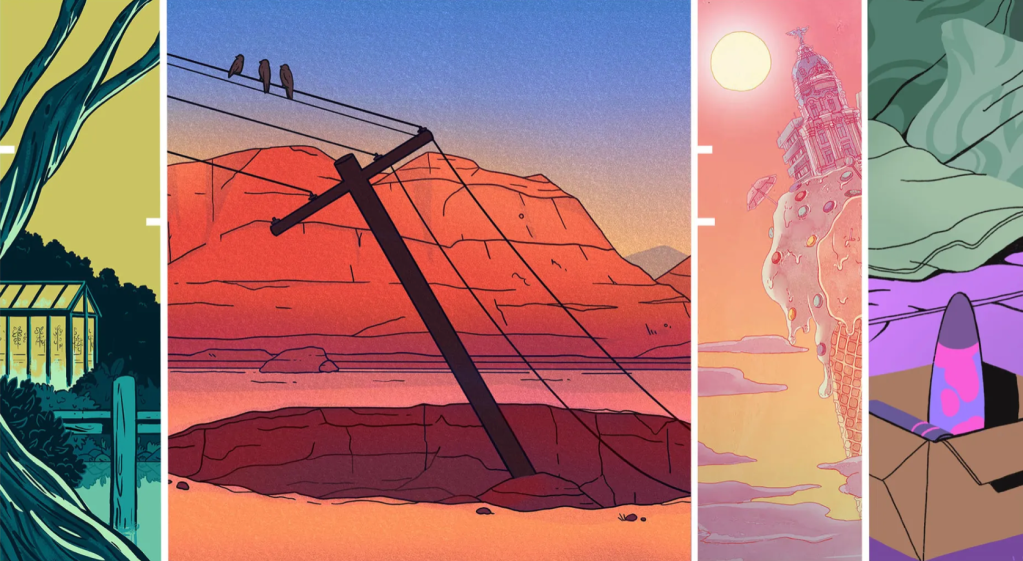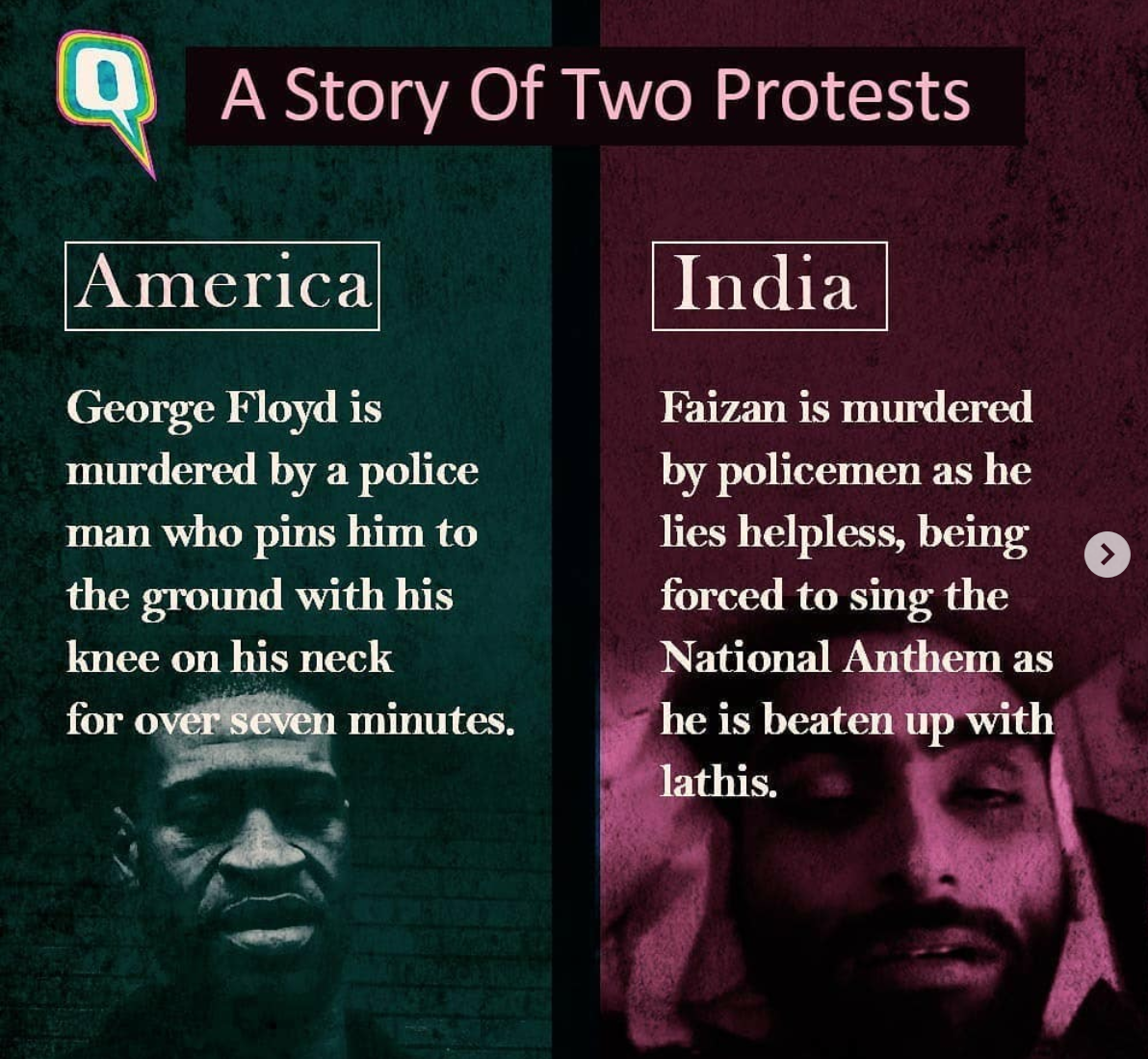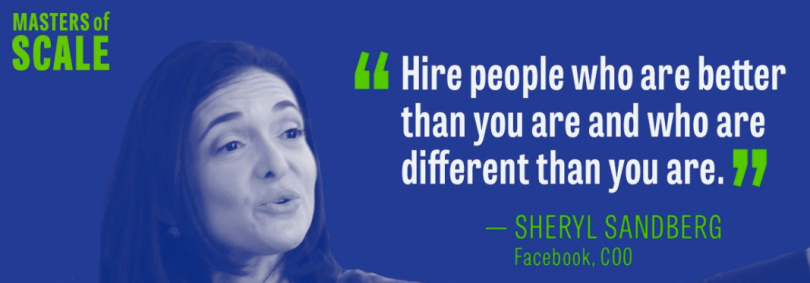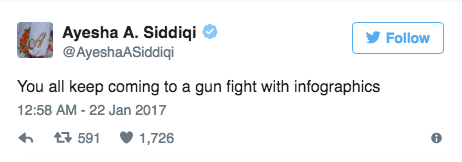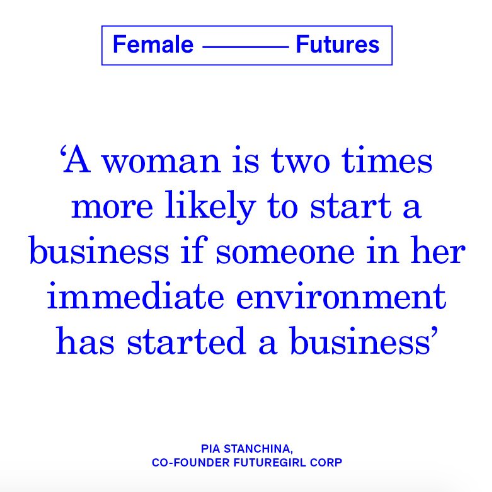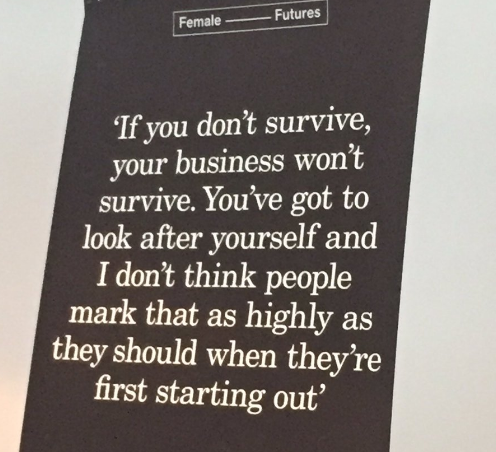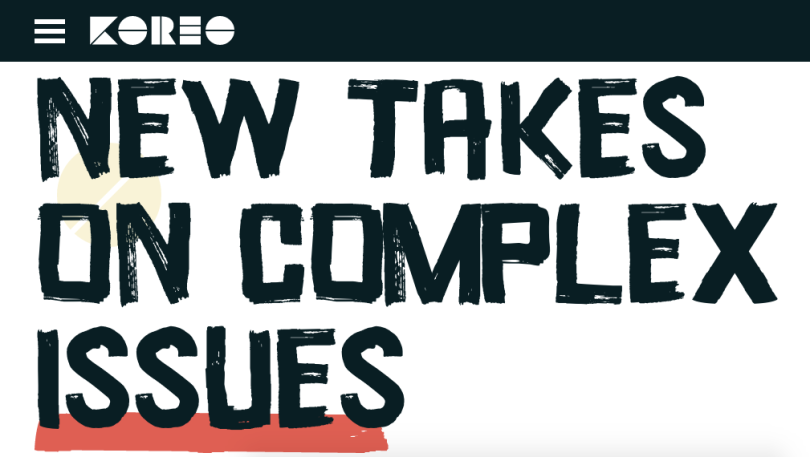In 2011, Matt Locke started Storythings. It began as a vehicle for him to take on consultancy work, but soon expanded: in 2014 Hugh Garry joined as a Director, and in 2017 I did. We like to say we help good people tell important stories in fascinating ways, and we have. Over the last 10 years, Storythings has worked on strategy and production on a variety of communications projects: digital versions of static PDF reports, graphic comics, animated videos, online magazines that publish original long-form journalism from across the globe, first-person documentary films, podcasts, animated posters and everything in between.
Starting it all off for Storythings in 2011 was a project called Pepys Road, created for the release of the book ‘Capital’ by John Lanchester, which featured a fictional road called Pepys Road (though it turns out Pepys Road does actually exist in South London!). We worked with the amazingly talented James Bridle and Dean Vipond to create an email-based Choose Your Own Adventure story that took you through some of the alternative realities touched on in the book, which is set in London just after a financial crash (sound familiar?). Unfortunately, the official website for the project is no longer live, but Dean Vipond explains the project here, Dazed Magazine interviewed James Bridle about it here, and Frank Rose interviewed Matt about it here, if you’d like to go back in history.
Fast forward 10 years and it’s 2021, the time when Pepys Road’s fictional stories were actually set. A conversation with Matt just as I was returning from maternity leave at the beginning of 2021 was the seed of the idea for our 10th anniversary project: why not commemorate our work on Pepys Road, where John Lanchester wrote multiple alternative scenarios for what the reader might find happens to them in the UK in a few years’ time, by commissioning authors from around the world to write original fiction about what the world might be like 10 years from now, around 2031? That would take us from 2011 to 2021 to 2031, Storythings-style.
We’ve done some very wide-ranging work in the last 10 years (to name a few: How We Get To Next for the Gates Foundation, Identities of the World for Experian, Nevertheless and Standing on the Shoulders for Pearson, Rethink Quarterly for ADP, How To Build An App for Google & Tom Scott, Top 10 Frontier Technologies for Climate Action for IMC, Brink and the Foreign & Commonwealth Development Office, Minds and Machines for Nesta). And we felt that our 10th anniversary was a unique chance to showcase how our thinking has diversified and grown in the last 10 years.
We haven’t just commissioned original short fiction though – we’ve decided to take them further and commissioned talented people from across industries to comment on them in specific formats, which is our special thing (see: Formats Unpacked). You’ll see the responses below each original story, taking the original stories even further – we thought it was fascinating how people with expertise in the domains the stories covered could expound on the themes in those ways. The kinds of stories and writers we have commissioned for this project (a note: all our writers and artists are paid) are truly representative of the kind of work we like to do, and a celebration of who we are.
So it was with a lot of pleasure (and for me personally a TON of excitement!) that we launched Storythings 10 in November 2021, a series of short works of fiction set in 2031. The stories, and the writers, represent a truly diverse set of countries and topics: the writers come from South Korea, India, Jordan, USA, UK, Spain, Australia and Bolivia, and the subjects they touch on include digital identity, health, politics, climate, culture, education, technology, media and careers.
The stories will make you think about questions like: What will our healthcare system be like in a post-pandemic world? What will it *really* be like to wear augmented reality glasses all the time? What will it be like when humans damage the Earth beyond repair? How beautiful can a robot’s thoughts be – are they always boring because robots are not human?
The future, as William Gibson says, is already here. It’s just unevenly distributed, and in these writers’ works maybe you can see these different yet similar futures for humanity.
Here is the roster of writers we worked with on this project, whose talent and creativity know no bounds. If you’re looking for writers, we highly recommend them:
Original fiction
Night Farm by Maria Anderson (USA)
Maria Anderson’s fiction has appeared in McSweeney’s Quarterly, Sewanee Review, and Best American Short Stories 2018. She has been awarded residencies from Jentel, Helene Wurlitzer Foundation, and Joshua Tree National Park. You can find her on Twitter and Instagram. She grew up on a cattle ranch in southwestern Montana.
Your Cup Runneth Over by Lavanya Lakshminarayan (India)
Lavanya Lakshminarayan is the BSFA and Locus Award-nominated author of ‘Analog/ Virtual: And Other Simulations Of Your Future’. She’s also been shortlisted for the Times of India AutHer Award for Best Author Debut. In her other life as a game designer, she’s worked on Zynga Inc.’s FarmVille, FarmVille 2 and Mafia Wars. Her forthcoming publications include a short story in the Gollancz Book of South Asian Science Fiction (Volume 2), and a novelette in the anthology, Third Eye. Follow her on Instagram: @lavanya.ln and Twitter: @lavanya_ln.
Undullah Street by Ellen van Neerven (Australia)
Ellen van Neerven (they/them) is an award-winning author, editor and educator of First Nations Australian and Dutch heritage. They belong to the Yugambeh Nation and live in Meanjin (Brisbane) on the unceded land of the Turrbal and Yugera peoples. Ellen writes fiction, poetry and non-fiction. Their books include Throat (2020), Heat and Light (2014) and Comfort Food (2016). They edited Flock: First Nations Stories Then and Now (2021).
Madrid, 2031 by Maria Bonete Escoto (Spain)
María Bonete Escoto (Elche, 1993) is a Spanish writer based in Madrid. She participated in the climate fiction anthology ‘Estío. Once relatos de ficción climática’ (Episkaia, 2018), has published the short climate gothic novel ‘No hay tierra donde enterrarme’ (Episkaia, 2019) and has a short story in the anthology ‘El Gran Libro de Satán’ (Blackie Books, 2021). She writes non-fiction about the relationship between videogames and culture as well, and you can read her work in Heterotopias Zine, Revista Manual and Nivel Oculto. She is on Twitter as @flowersdontlast.
The Confession by Krys Lee (South Korea)
Krys Lee is the author of the story collection Drifting House and the novel How I Became a North Korean, and the translator of I Hear Your Voice and the story collection Diary of a Murderer by Young-ha Kim. She has won the Rome Prize in Literature and the Story Prize Spotlight Award, the Honor Title in Adult Fiction Literature from the Asian/Pacific American Libraries Association, and was a finalist for the Center for Fiction First Novel Prize and the BBC International Story Prize. She currently teaches creative writing at Yonsei University, Underwood International College in Seoul, South Korea.
Three in One by Hisham Bustani (Jordan), translated by Nariman Youssef
Hisham Bustani is an award-winning Jordanian author of five collections of short fiction and poetry. His work has been translated into many languages, with English-language translations appearing in journals including The Kenyon Review, Black Warrior Review, The Georgia Review, The Poetry Review, Modern Poetry in Translation, World Literature Today, and The Los Angeles Review of Books Quarterly. His fiction has been featured in The Best Asian Short Stories among other anthologies. His book The Perception of Meaning (Syracuse University Press, 2015) won the University of Arkansas Arabic Translation Award. Hisham was the 2017 recipient of the Rockefeller Foundation’s Bellagio Fellowship for Artists and Writers, and his second book in English translation, The Monotonous Chaos of Existence, is forthcoming in 2022 from Mason Jar Press. He occasionally tweets @H_Bustani.
Nariman Youssef (@nariology) is a Cairo-born, London-based semi-freelance translator with an MA in Translation Studies from the University of Edinburgh. She works between Arabic and English and part-time manages a translation team at the British Library. Literary translations include Inaam Kachachi’s The American Granddaughter, Donia Kamal’s Cigarette No. 7, contributions in Words Without Borders, The Common, Banipal magazine, and poetry anthologies Beirut39 and The Hundred Years’ War.
Robot Poet by Edmundo Paz-Soldan (Bolivia/ USA), translated by Roy Youdale
Edmundo Paz-Soldán (Bolivia, 1967) teaches Latin American literature at Cornell University (Ithaca, New York). He has published twelve novels, among them Norte (2011), and Allá afuera hay monstruos (2021), and five short-story books, among them and Las visiones (2016); His novels have been translated to twelve languages. He has won the international Juan Rulfo award for the short story and the National Book Award (Bolivia). He is working on a book of short stories on the impact of technological change today. He is on Twitter and Instagram as @edpazsoldan.
Roy Youdale completed a PhD in literary translation in 2017 at Bristol University and a book based on his thesis, Using computers in the translation of literary style: challenges and opportunities, was published by Routledge in 2019. As a case study for both the thesis and the book Roy undertook a complete translation into English of the Uruguayan writer Mario Benedetti’s novel, Gracias por el Fuego (1965). His co-translation with Nick Caistor of another short story by Edmundo Paz Soldán, ‘The dictator and the greetings cards’, will shortly be published in the Los Angeles Review.
Glass Cage by Gita Ralleigh (UK)
Gita Ralleigh is a writer and NHS doctor born to Indian immigrant parents in London. She won the Wasafiri new writer’s prize in 2013 and has been published by Bellevue Literary Review, The Emma Press and Magma Poetry. She teaches creative writing to science undergraduates and has an MA in Creative Writing as well as an MSc on the intersection of literature with medicine. Her debut poetry collection A Terrible Thing is published by Bad Betty Press. You can find her on Twitter as @storyvilled.
Responses
As we were thinking about how to extend the impact of these stories, we also worked with academics, professionals and entrepreneurs in fields that the stories were about, to get them to comment on the stories in different ways.
You can read all the stories here.
We hope they give you as much food for thought as they have given us during the process of presenting this work to you. If you’d like to work with us on stories or series like this, or bring to life other amazing stories that no doubt happen regularly in your organisations, get in touch!
Here’s to the next 10 years! If you’d like to stay in the loop about our work and get weekly recommendations for things to look at that pique our interest, please sign up to our newsletter here, and if you’d like to us unpack formats of different kinds every week with our community, sign up to our Formats Unpacked newsletter here. We’d also love to hear your thoughts about the stories and the response formats – do get in touch with us on Twitter, LinkedIn or we’re always available via email!
See you around!


